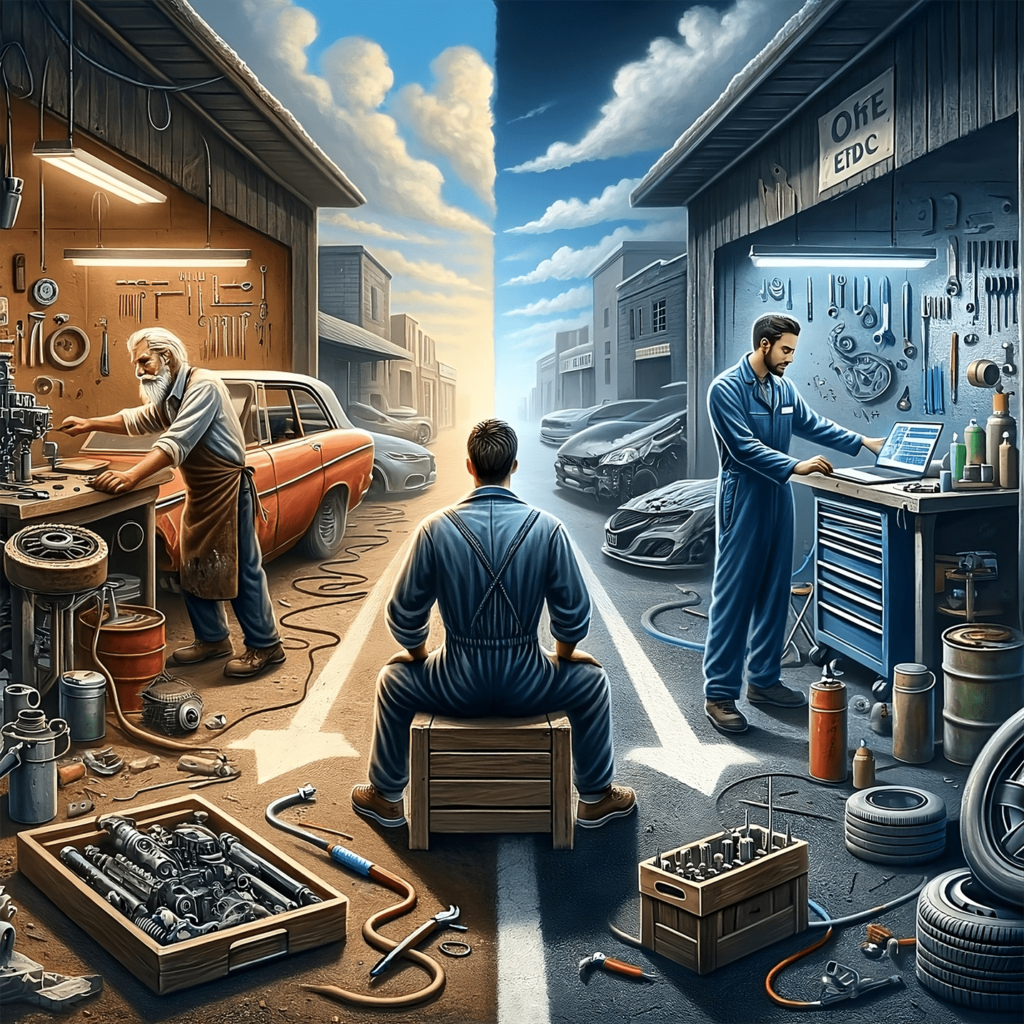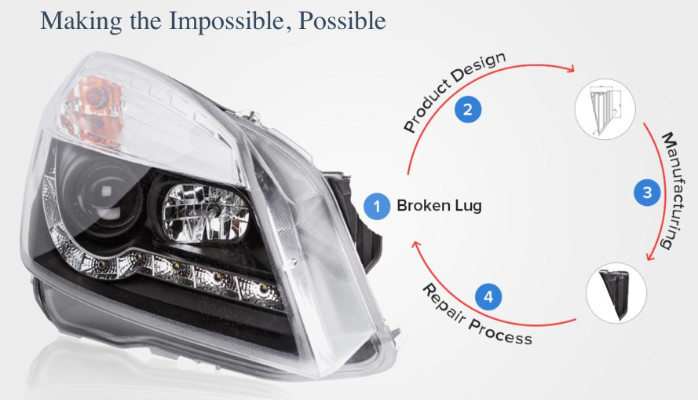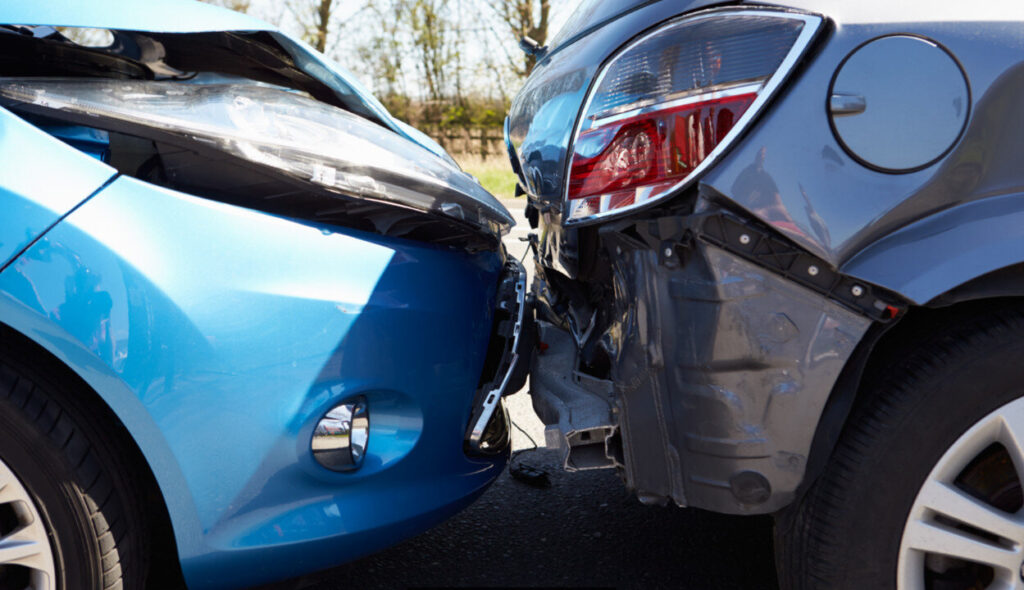Collision Course: The Struggle Between Tradition and Innovation in Auto Repair
Innovation vs. Tradition
The struggle between innovation and tradition is not unique to the collision repair industry. However, the rapid pace of change in automotive technology and materials makes it particularly acute in this field. There is a growing need for a balance between preserving the valuable aspects of traditional craftsmanship and embracing the efficiencies and advancements offered by new technologies and repair processes. This balance requires solid leadership and a shift in mindset from seeing technology and challenging the process as a threat to viewing it as a tool that enhances skill and repair quality.
The Core Challenge
The collision repair industry is at a significant crossroads, wrestling with the dichotomy between the push for modernization and a workforce entrenched in traditional methods. This challenging situation poses a vital question: how can the industry advance when many of its seasoned professionals remain deeply rooted in old-school practice
The landscape of collision repair has transformed dramatically. No longer confined to simple collision repair tasks, the industry now incorporates advanced materials, sophisticated electronics, and complex vehicle designs. Digital tools for damage assessment and environmentally friendly materials are spearheading this transformation. Despite these advancements, a notable divide persists. Many experienced trainers and technicians in the field show reluctance to embrace new technologies, clinging instead to the comfort of traditional methods no matter the cost or impact to the business.
Resistance to Change
The resistance to change in the collision repair industry is complex, going beyond mere stubbornness or lack of knowledge. It\’s deeply intertwined with psychological and cultural factors. Many seasoned professionals take pride in traditional techniques that have proven effective over time. This sense of identity, coupled with the intimidating learning curve associated with new technologies, poses a significant barrier for those who have dedicated years to mastering their craft.
Historical Perspective
Traditionally, collision repair was a trade passed down through generations, with techniques and knowledge being transferred through hands-on experience and apprenticeships. This generational learning fostered a sense of continuity and respect for established methods. However, the rapid technological and material advancements in the automotive industry, such as hybrid and electric vehicles, ADAS (Advanced Driver Assistance Systems), and the use of exotic materials for bodywork, have created a new paradigm that requires a different skill set and repair processes.
Bridging the Gap
To bridge the gap between traditional and modern practices, the industry must prioritize education and leadership. Training programs that are both accessible and engaging for technicians of all experience levels are crucial. Industry leaders play a pivotal role in cultivating a culture that values continuous learning and adaptation, offering the necessary resources and support for a smooth transition to new methodologies.
Power Struggle
The industry\’s evolution is further complicated by a significant power struggle. Many of the seasoned, traditional professionals hold key decision-making positions, not only in collision repair businesses but also in industry-led bodies. Their reluctance to embrace change or step aside, even when recognizing its negative impact on progress, results in decisions that favor resistance to change or adherence to outdated methods. This stance leads to ongoing costs and fosters a culture of confusion, as innovative approaches are overlooked in favor of comfort and familiarity.
Disconnected
A major hurdle in this transformation is the disconnect between the mature, traditional workforce and the modern world. This gap arises not only from a reluctance to abandon familiar methods but also from a lack of exposure, understanding, or interest in newer methodologies. Bridging this divide is essential for the industry\’s progression, requiring targeted strategies that respect the expertise of experienced technicians while gradually introducing them to the efficiencies of modern technology.
Leadership and Vision
Effective leadership is pivotal in navigating the industry through this period of transition. Leaders must possess a clear vision for the future, one that acknowledges the value of traditional skills while also embracing the potential of new technologies. They must be adept at communicating this vision and inspiring their teams to adapt to the changing landscape. This involves not just directing change but also listening to the concerns of the workforce and addressing them in a constructive manner.
Conclusion
By valuing traditional expertise while embracing new technologies and fostering a culture of continuous learning, the industry can successfully navigate these challenges. Strong leadership, patience, and understanding are key in achieving a more efficient, safe, and sustainable approach to collision repair, ensuring the industry remains relevant and competitive in a rapidly evolving landscape.


